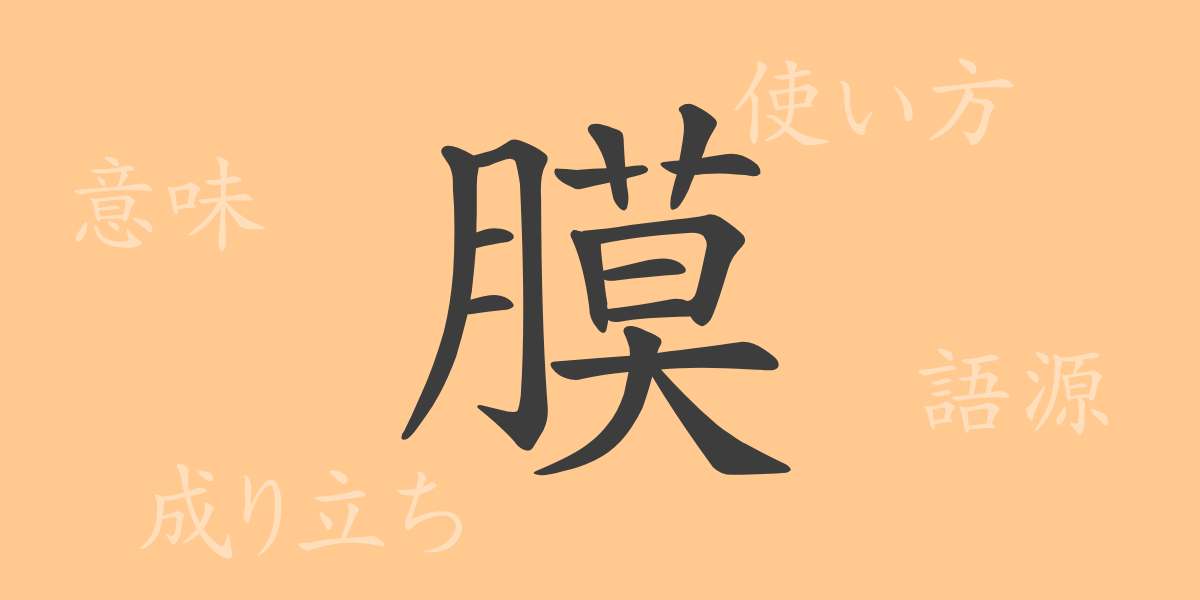The beauty of the Japanese language lies in its complexity and subtlety. One of the commonly used kanji, “膜 (maku),” deeply intertwines with our daily lives through various membranes we encounter. In this article, we will explore the allure of “膜 (maku)” from its etymology to its modern usage, including idioms and phrases.
The Origin of “膜 (maku)”
The kanji “膜 (maku)” has its origins in ancient Chinese oracle bone script. Originally, it referred to a thin layer that wraps meat. Over time, it evolved to denote thin tissues or substances that cover the interior of the body. This kanji has come to be used in various contexts in daily life.
The Meaning and Usage of “膜 (maku)”
“膜 (maku)” biologically refers to a thin layer that covers the interior or cells of living organisms. Metaphorically, it can also mean a thin wall or barrier that separates something. For instance, in the expression “breaking the sound barrier,” the sound barrier can be referred to as “音膜 (onmaku).”
Reading, Stroke Count, and Radical of “膜 (maku)”
The kanji “膜 (maku)” has specific readings and structure in Japanese.
- Reading: The on’yomi (音読み) is “マク (maku),” and there is no specific kun’yomi (訓読み).
- Stroke Count: It has a total of 14 strokes.
- Radical: The radical is 月 (にくづき, nikuzuki).
Idioms, Phrases, and Proverbs Using “膜 (maku)” and Their Meanings
Idioms and phrases containing “膜 (maku)” reflect the meanings carried by this kanji.
- 細胞膜 (さいぼうまく, saiboumaku): The membrane that covers the exterior of a cell.
- 鼓膜 (こまく, komaku): The thin membrane inside the ear that senses sound.
- 網膜 (もうまく, moumaku): The membrane inside the eye that senses vision.
- 羊膜 (ようまく, youmaku): The membrane that encloses a fetus.
Summary of “膜 (maku)”
The kanji “膜 (maku)” plays an important role in the Japanese language due to its wide range of uses and depth. From biological meanings to metaphorical uses in daily life, “膜 (maku)” is used in many contexts. This single character has the power to evoke the sense of an invisible barrier, enriching our language with expressive nuances.

























